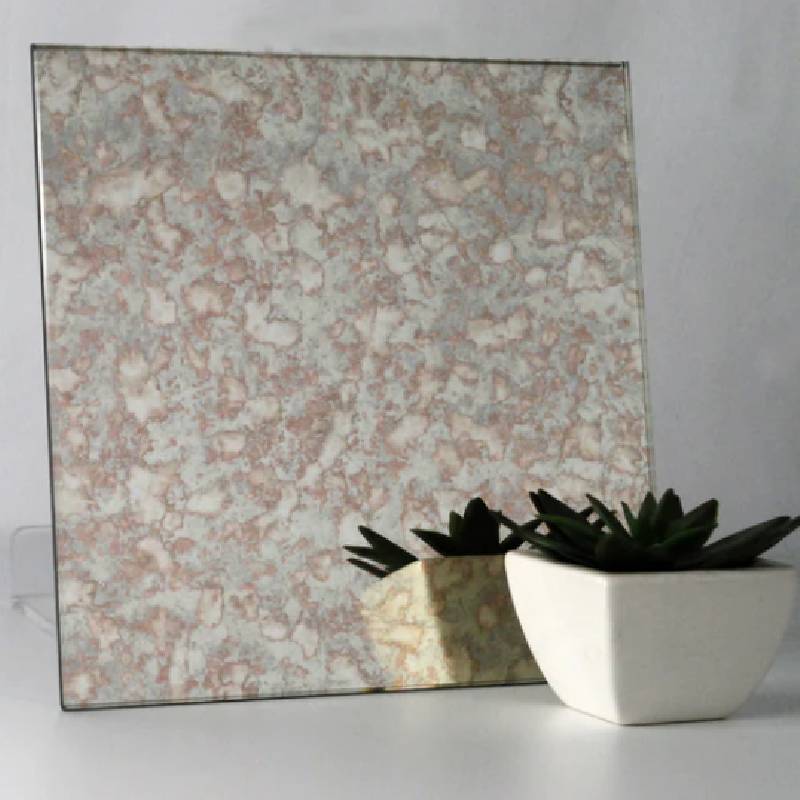The Benefits of Low-E Reflective Glass A Sustainable Choice for Modern Architecture
In recent years, the construction industry has seen a significant shift towards sustainable building practices. One of the most innovative products that have emerged to support this trend is Low-E (low emissivity) reflective glass. This advanced glazing technology offers a multitude of advantages, making it an essential component in modern architectural design.
Understanding Low-E Reflective Glass
Low-E reflective glass is coated with a thin, transparent layer that reflects infrared light while allowing visible light to pass through. This coating significantly reduces the amount of heat that can enter or escape through the glass, thus enhancing the energy efficiency of buildings. Different formulations of Low-E coatings can provide various benefits depending on climatic conditions, making it a versatile choice for architects and builders.
Energy Efficiency
One of the most compelling features of Low-E reflective glass is its ability to improve energy efficiency. By minimizing heat transfer, this glazing technology reduces the reliance on heating and cooling systems. During hot months, it keeps indoor environments cooler by reflecting exterior heat away, while in colder months, it retains indoor heat. This not only reduces energy costs for homeowners and businesses but also contributes to a smaller carbon footprint, making it an eco-friendly choice.
Enhanced Comfort
Indoor comfort is paramount in architectural design, and Low-E reflective glass plays a significant role in maintaining a stable indoor environment. By mitigating temperature fluctuations, it helps maintain consistent indoor temperatures, ensuring that occupants feel comfortable throughout the year. Moreover, it greatly reduces glare, which is particularly beneficial in office settings and homes with large windows.
low e reflective glass
UV Protection
Another impressive aspect of Low-E reflective glass is its effectiveness at blocking harmful ultraviolet (UV) rays. Prolonged exposure to UV rays can cause fading of furniture, carpets, and art pieces, leading to costly replacements. Low-E reflective coatings can filter out up to 99% of UV radiation, providing an additional layer of protection for interior spaces. This feature is especially important for retail environments and residential spaces where the longevity of furnishings is a concern.
Aesthetic Appeal
Beyond its functional virtues, Low-E reflective glass also enhances the aesthetic appeal of buildings. Available in various styles and finishes, it can be seamlessly integrated into both contemporary and traditional architectural designs. The reflective quality of the glass can create stunning visual effects, such as beautiful reflections of the surrounding environment, while still allowing for abundant natural light to penetrate the space. This balance is crucial for creating inviting and visually appealing indoor areas.
Contribution to LEED Certification
For architects and builders aiming for LEED (Leadership in Energy and Environmental Design) certification, Low-E reflective glass can be a vital component in achieving sustainable building standards. This certification, which is highly regarded in the construction industry, rewards projects that incorporate environmentally-friendly materials and practices. By utilizing Low-E glass, buildings can earn credits towards LEED certification, enhancing their marketability and reputation.
Conclusion
Low-E reflective glass represents a significant advancement in building materials and technology. Its ability to enhance energy efficiency, improve indoor comfort, provide UV protection, and add aesthetic value can transform the way we design and construct our living and working spaces. As sustainability continues to be a priority in architecture, incorporating Low-E reflective glass not only meets the demand for responsible building practices but also yields long-term benefits for both occupants and the environment. As more architects and builders recognize these advantages, we can expect the adoption of Low-E reflective glass to grow, ultimately contributing to a more sustainable future in the construction industry.
 Afrikaans
Afrikaans  Albanian
Albanian  Amharic
Amharic  Arabic
Arabic  Armenian
Armenian  Azerbaijani
Azerbaijani  Basque
Basque  Belarusian
Belarusian  Bengali
Bengali  Bosnian
Bosnian  Bulgarian
Bulgarian  Catalan
Catalan  Cebuano
Cebuano  Corsican
Corsican  Croatian
Croatian  Czech
Czech  Danish
Danish  Dutch
Dutch  English
English  Esperanto
Esperanto  Estonian
Estonian  Finnish
Finnish  French
French  Frisian
Frisian  Galician
Galician  Georgian
Georgian  German
German  Greek
Greek  Gujarati
Gujarati  Haitian Creole
Haitian Creole  hausa
hausa  hawaiian
hawaiian  Hebrew
Hebrew  Hindi
Hindi  Miao
Miao  Hungarian
Hungarian  Icelandic
Icelandic  igbo
igbo  Indonesian
Indonesian  irish
irish  Italian
Italian  Japanese
Japanese  Javanese
Javanese  Kannada
Kannada  kazakh
kazakh  Khmer
Khmer  Rwandese
Rwandese  Korean
Korean  Kurdish
Kurdish  Kyrgyz
Kyrgyz  Lao
Lao  Latin
Latin  Latvian
Latvian  Lithuanian
Lithuanian  Luxembourgish
Luxembourgish  Macedonian
Macedonian  Malgashi
Malgashi  Malay
Malay  Malayalam
Malayalam  Maltese
Maltese  Maori
Maori  Marathi
Marathi  Mongolian
Mongolian  Myanmar
Myanmar  Nepali
Nepali  Norwegian
Norwegian  Norwegian
Norwegian  Occitan
Occitan  Pashto
Pashto  Persian
Persian  Polish
Polish  Portuguese
Portuguese  Punjabi
Punjabi  Romanian
Romanian  Russian
Russian  Samoan
Samoan  Scottish Gaelic
Scottish Gaelic  Serbian
Serbian  Sesotho
Sesotho  Shona
Shona  Sindhi
Sindhi  Sinhala
Sinhala  Slovak
Slovak  Slovenian
Slovenian  Somali
Somali  Spanish
Spanish  Sundanese
Sundanese  Swahili
Swahili  Swedish
Swedish  Tagalog
Tagalog  Tajik
Tajik  Tamil
Tamil  Tatar
Tatar  Telugu
Telugu  Thai
Thai  Turkish
Turkish  Turkmen
Turkmen  Ukrainian
Ukrainian  Urdu
Urdu  Uighur
Uighur  Uzbek
Uzbek  Vietnamese
Vietnamese  Welsh
Welsh  Bantu
Bantu  Yiddish
Yiddish  Yoruba
Yoruba  Zulu
Zulu 

